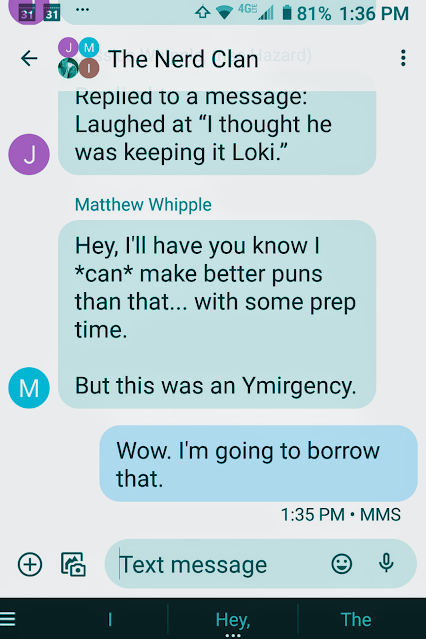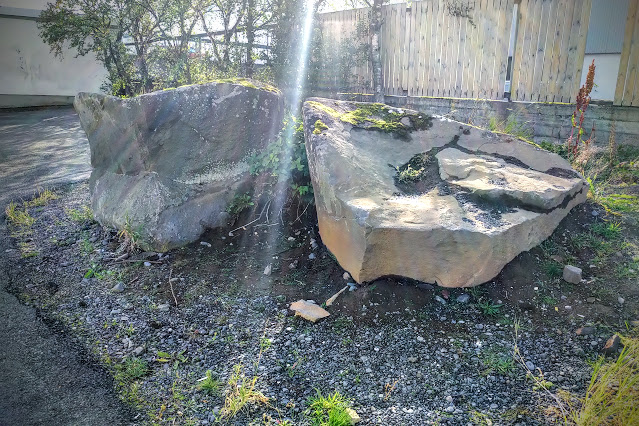a NorsePlay on words.

We've all heard the Loki/Low-Key one, but then my genius-level polymath pal Matt decided to declare a state of "Ymirgency" in this Thanksgiving day group text that really caught me off guard. (And yes, my friends are actually awesome enough to indulge my love of the Norse Lore like this.) If we look at Ymir's name , it gets variously translated as sound/utterance/to cry/whine, which could very well make it a "Ymirgency" ambulance siren of sorts. And odds are he made his share of cosmic-level wailing during his dispatching by Óðinn, Vili, & Vé. With all the kennings, deadpanning, implications, entendre, & grim humour in the Sagas , punning itself seems to not be so much of a common convention, but given the use of all these other clever names and literary structures we should start NorsePlaying them into our retellings & original compositions as it can only add to the skaldic toolbox and enrich the spirit of the Lore. Ergo: Feeling a little Tý


